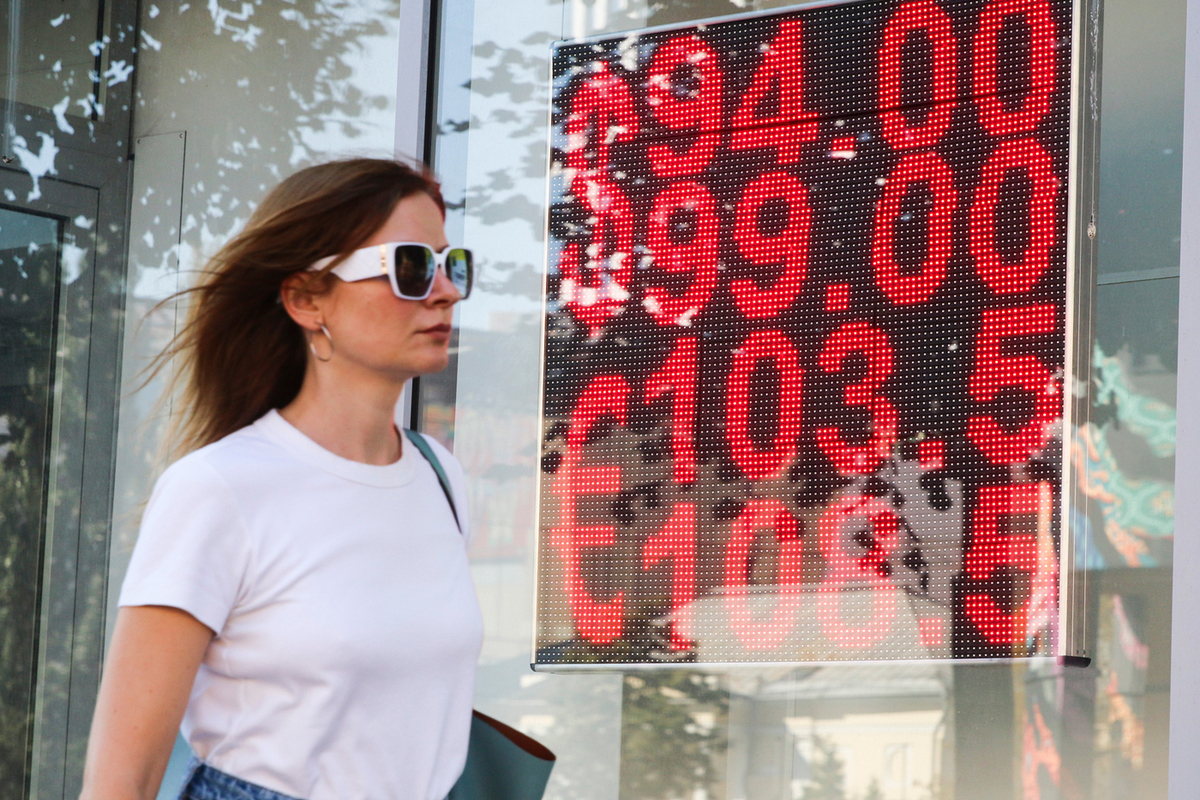“Negative news for the ruble”: the Ministry of Finance will buy more foreign currency in April
[ad_1]

The rate may weaken to 95 per dollar and 104 per euro
In April, the Ministry of Finance will more than double the volume of foreign currency purchases under the fiscal rule. A month earlier, Siluanov’s department spent 4.7 billion rubles a day on this, and now the measure will cost 11.2 billion daily. Analysts interviewed by MK associate it with the favorable price environment on the oil market, which the state expects will bring the treasury 128.3 billion rubles of additional export income. As for the potential impact of this massive purchase on the ruble, the exchange rate may weaken.
Let us recall that the design of the updated fiscal rule, designed to protect the economy from volatility in commodity markets, is based on the cut-off price of oil of $60 per barrel of the Russian Urals grade. When the actual price of oil exceeds this base level, additional oil and gas revenues are generated, which are used to purchase foreign currency on the domestic market. If the actual price is below the cut-off price, then the sale of currency is provided.
On January 15, 2024, the Ministry of Finance switched to foreign currency sales for the first time since August 2023, explaining this by a shortage of actually received raw material income compared to expected volumes amounting to almost 200 billion rubles. The daily volume of transactions amounted to 4.1 billion rubles. In February, currency purchases were resumed; 3.7 billion rubles were spent on this daily. Moreover, in contrast to the practice in the pre-sanction era, today operations are carried out with Chinese yuan, and not with dollars and euros. Anton Siluanov announced the impossibility of using banknotes of unfriendly jurisdictions back in July 2022. But what exactly caused the current step on the part of the Ministry of Finance, what will it give to the economy, and how will the ruble react in conditions when there is more foreign exchange liquidity in the country, even if only slightly? We addressed this question to expert economists and financial analysts.
Igor Nikolaev, chief researcher at the Institute of Economics of the Russian Academy of Sciences:
“When the state puts in demand for a currency, it traditionally rises in price, and the ruble, in turn, loses weight. The ruble exchange rate may decline, but only slightly. In April, when the federal treasury is expected to be replenished with an additional amount of 128.3 billion rubles, favorable conditions will emerge for the purchase of foreign currency. Then there may not be such people. We need currency in any case, for example, to purchase critical imported equipment. Understanding this, the Ministry of Finance is acting absolutely rationally. He also sees that recently the price of Brent oil exceeded $90 per barrel – against the backdrop of increasing geopolitical tensions, primarily the escalation of the Iran-Israeli conflict, which is fraught with escalation into a full-scale war in the Middle East. This factor also works in favor of the ruble.”
Andrey Loboda, economist, director of communications at BitRiver:
“When the oil price is above $60 per barrel, exporters and the state receive windfall profits, which, according to the budget rule, should be accumulated in the National Welfare Fund. Since world oil prices surpassed $80 per barrel in March, windfall profits were generated. And the discount of the Russian Urals grade to the reference Brent turned out to be no higher than $17 per barrel. Therefore, the budget rule will work for the purchase of currency, and not for the sale. The Bank of Russia, in order to support the ruble exchange rate, “mirrors” the purchase of foreign currency by the Ministry of Finance, but it sells monthly no more than 11.8 billion rubles per day. And the Ministry of Finance in April will increase the volume of transactions to 11.2 billion rubles, that is, the difference between the purchase of currency (by them) and the sale (by the Central Bank) will be reduced to a minimum – to only 0.6 billion rubles. This is negative news for the ruble, although until the end of April the stabilization of the exchange rate will be facilitated by the mandatory sale of foreign currency earnings by exporters. But the ruble may well fall in price to 95 per dollar and 104 per euro.”
Alexander Shneiderman, head of sales and customer support department at Alfa-Forex:
“The measure carried out by the Ministry of Finance within the framework of the budget rule is required solely to maintain a stable ruble exchange rate. Here it is important to consider not so much the volume of purchases of foreign currency and gold, but the ratio of this volume to the level of parallel sales by the Central Bank of the same assets. Although the difference will be only 0.6 billion rubles, for the Russian currency this is insignificant. Much more important for the exchange rate will be the final decision on the extension (or not) of the requirement to sell part of export proceeds by Russian companies, which must be made before the end of April.”
[ad_2]
Source link






